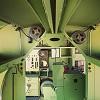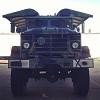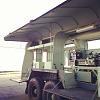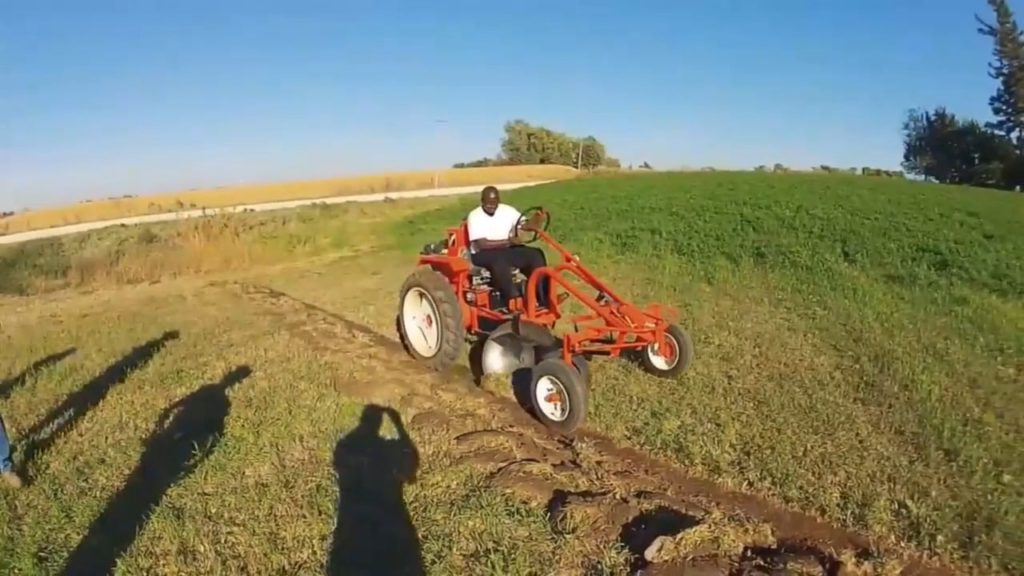Africa Tractor Build-OSEA
Please Subscribe To ANDY SYDAKING - FARM TRACTOR Youtube Channel
Open Source Ecology Africa or OSEA is a not for profit established to produce open source machines in Africa. Africa is on the verge of a food shortage with the expected population growth of two billion people by 2050, the majority of farmers in Africa are the women and youth. This prediction alone summarises the scale of our agricultural challenges: to feed Africans and to create wealth for them, and to conserve resources for future generations. OSEA Tractor Build Project seeks to drive our continental agricultural revolution, by increasing the use of Tractors in agriculture in Africa. Farming and the use of machines such as tractors and combine harvesters are what have made agriculture in the G7 countries so successful. According to the World Bank there are around five tractors for every 1,000 farmers in Africa as compared to 1,600 tractors for every 1,000 farmers in the U.S. Where in Europe or America today do you find a man and a woman cultivating their farm with a simple hand-hoe to sustain their family as is so common in Africa? In most EU countries less than 5 percent of the population are farmers, yet in most sub-Saharan countries as much as 80 percent are small-scale farmers, the majority of which are women. It was with this in mind that in 2014, through the Malabo Declaration, the African Union (AU) recognized the importance of resorting to mechanisation to accelerate agricultural growth in Africa; it is also the answer to the GMO dilemma. It was the reason that Rhoda Peace Tumusiime, commissioner for Rural Economy and Agriculture with the AU, recommended the hand hoe to be banished from the continent. Video of youth engagement for tractors
AFRICA TRACTOR BUILD PROJECT IS BEST OPPORTUNITY FOR AFRICA AGRICULTURE DEVELOPMENT
Why Build Tractors?
Africa is on the verge of a food shortage with the expectant population growth of two billion people by 2050, the majority of farmers in Africa are the women and youth. This prediction alone summarizes the scale of our agricultural challenges: to feed Africans and to create wealth for them, and to conserve resources for future generations.
Farming and the use of machines such as tractors and combine harvesters are what have made agriculture in the G7 countries so successful. According to the World Bank there are around five tractors for every 1,000 farmers in Africa as compared to 1,600 tractors for every 1,000 farmers in the U.S. Where in Europe or America today do you find a man and a woman cultivating their farm with a simple hand-hoe to sustain their family as is so common in Africa? In most EU countries less than 5 percent of the population are farmers, yet in most sub-Saharan countries as much as 80 percent are small-scale farmers, the majority of which are women. It was with this in mind that in 2014, through the Malabo Declaration, the African Union (AU) recognized the importance of resorting to mechanization to accelerate agricultural growth in Africa it is also the answer to the GMO dilemma. It was the reason that Rhoda Peace Tumusiime, commissioner for Rural Economy and Agriculture with the AU, recommended the hand hoe to be banished from the continent.
This process recognizes that African women constitutes close to seventy percent of the agricultural workforce and are major contributors to food production and security. Mainstreaming their participation with the use of tractors and empowerment in Africa’s agricultural revolution is therefore critical. Agriculture and agribusinesses can also provide opportunities to millions of our young people entering Africa’s labor markets every year.
The Open-Source Ecology Africa Group, Tractor Build Project seeks to drive our continental agricultural revolution, by increasing the use of Tractors in agriculture in Africa.
WHO WILL BUILD THE TRACTORS?
The Open-Source Ecology Africa Groups, affiliated with Open-Source Ecology, a network of farmers, engineers, and supporters that for the past 10 years has been creating a Global Village Construction Set. An open source, low-cost, high performance technological platform that allows for easy, DIY fabrication of the 50 different Industrial Machines that it takes to build a sustainable civilization with modern comforts. The GVCS lowers the barriers to entry into farming, building, and manufacturing and can be seen as a life-size lego-like tractor and a set of modular tools that can create entire economies. The task of Open-Source Ecology Africa Group is to teach people in small villages in Africa how to make tractors, and tractor implements from local resources with basic machine shop skills. The tractor parts once machining is complete will be assembled by a joint team of students, local men, and The OSEA Group in the village to show and teach the school students, dignitaries from Botswana National House of Chiefs, and other on lookers from the village and surrounding area the fabrication of this tractor. The first Agriculture project which the tractor will be featured for use is in the village of Mantshadidi, Botswana. We have an offer to jointly use 26 acres of land in a community project where we work with the local people farming crops and use land for residential purposes. The land is located about 2 hours from Gaborone Capital City of Botswana in the Eastern Region of Botswana. After the first tractor build is complete the schools and villages can adopt the blueprints and produce it themselves. All of the materials that will be used to fabricate the life trac 6 tractors will be from the local materials, so that all parts are available locally for subsequent tractor builds. Of the 50 machines in the Global Village Construction Set, we choose tractors to fabricate, first, because the need for food is the first priority. We also wish to focus on job creation from the fabrication of tractors in Botswana.
What will it take to make the Tractor Build Project Successful?
Basic Advanced Workshop
A basic advanced workshop – which allows for the production of many GVCS machines – which also features the efficiency required for extreme manufacturing rapid builds – contains these 7 tools:
1. CNC Torch Table for cutting steel parts- $12,000
2. 120 Ton Ironworker machine for rapid shearing and hole punching of 1″ thick metal – $21,000.00
3. CNC Mill – $17,000
4. CNC Lathe – $15,000
5. Heavy Duty Drill Press (2”-hole drilling capacity) – $10,000
6. 200 Amp MIG Welder – $2,000
7. Acetylene Torch – $400
Total cost of Machine Shop Equipment $77,400
This would allow one to build all the above tools (self-replication), plus things like tractors, micro tractors (lawnmowers), pelletizers, engines, hydraulic motors, and other things from open plans, using CNC assistance.
A Mobile Machine shop truck.
A mobile machine shop truck equipped with a 20kw PTO generator, a metal lathe, a big air compressor, a grinder, work benches, tables and drawers. The truck also has to have a cool hydraulic side lift system that opens the shop up completely. This is the perfect “goes anywhere” machine shop.”










Cost of Surplus Military Mobile Machine Shop Truck: $25,000
GVCS Machining Blueprints:
OSE is developing 50 machines of the Global Village Construction Set via module-based design. This means that the 50 machines are broken down into modules, and each module can be developed in parallel with other modules. Examples are CEB Press and Tractor. The exact list of GVCS machines has evolved over time and is still subject to change. Graphical list of 50 machines on OSE main website
• Open Source – freely published 3d designs, schematics, instructional videos, budgets, and product manuals on open-source wiki and have harnessed open collaboration with technical contributors.
• Low-Cost – The cost of making machines is, on average, 8 times cheaper than buying from an Industrial Manufacturer, including an average labor cost of hour for a GVCS fabricator.
• Modular – Motors, parts, assemblies, and power units can interchange, where units can be grouped together to diversify the functionality that is achievable from a small set of units.
• User-Serviceable – Design-for-disassembly allows the user to take apart, maintain, and fix tools readily without the need to rely on expensive repairmen.
• DIY – (do-it-yourself) the user gains control of designing, producing, and modifying the GVCS tool set.
• Closed Loop Manufacturing – Metal is an essential component of advanced civilization, and our platform allows for recycling metal into virgin feedstock for producing further GVCS technologies – thereby allowing for cradle-to-cradle manufacturing cycles. Botswana now mining Iron Ore and scheduled to have it first steel mill. Botswana begins first iron ore mining project | Reuters
• High Performance – Performance standards must match or exceed those of industrial counterparts for the GVCS to be viable.
• Flexible Fabrication – It has been demonstrated that the flexible use of generalized machinery in appropriate-scale production is a viable alternative to centralized production.
• Distributive Economics – We encourage the replication of enterprises that derive from the GVCS platform as a route to truly free enterprise – along the ideals of Jeffersonian democracy.
• Industrial Efficiency – In order to provide a viable choice for a resilient lifestyle, the GVCS platform matches or exceeds productivity standards of industrial counterparts.
Comparison of Open Source LifeTrac (Post-Industrial, parts only) and Industrial Equipment Costs
OSEA-Botswana Tractor Build Project.
Item | LifeTrac | Industrial | |||
Tractor With loader and PTO | 4,000 | 25,000 | |||
Tiller | 400 | 2,000 | |||
Skid loader | 25,000 | ||||
backhoe | 500 | 5,000 | |||
well rig | 1,500 | 9,200 | |||
CEB Press 8 bricks per minute | 6,500 | 100,000 | |||
Sawmill | 1,500 | 15,000 | |||
Spader | 500 | 5,000 | |||
Microcombine | 500 | 20,000 | |||
Hammer mill | 500 | 5,000 | |||
posthole digger | 300 | 2,000 | |||
baler | 500 | 5,000 | |||
Bale spikes | 150 | 500 | |||
hay mower | 200 | 2,000 | |||
hay rake | 500 | 2,000 | |||
Toothbar bucket | 300 | 1,200 | |||
Trencher | 500 | 5,000 | |||
brushhog | 400 | 900 | |||
Road grader | 500 | 5,000 | |||
Bulldozer | 5,000 | 15,000 | |||
Chain saw | 300 | 1,600 | |||
Labor | 10,000 | ||||
PowerCube(3) |
|
| 5,907 | ||
| 40,457 | 251,400 | |||
Cost of Life Trac 6 and other farm implements $40,457.00
Shipping cost: 5000
Miscellaneous 1800
Total cost: 149,657
149,657.00 US dollars to cover equipment, parts, material, labor, and shipping.
After completion of the first project the Tractor Build project should be able to sustained and supported by local economy.
skill Assessment Form
For those who wish to work on the Tractor build

